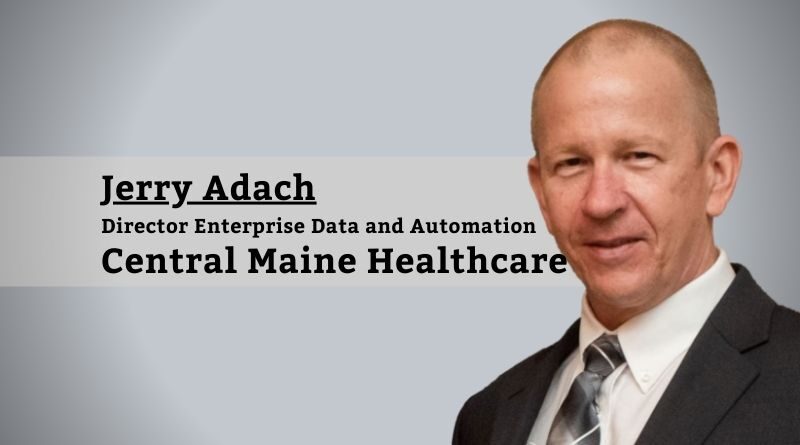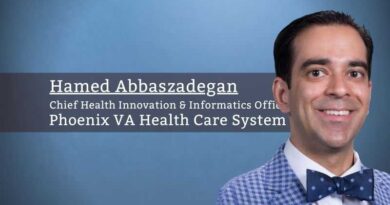Robotic Process Automation in Hospitals – Challenges and Results
By Jerry Adach, Director Enterprise Data and Automation, Central Maine Healthcare
Robotic Process Automation (RPA) really took off a few short years ago, even though much of the technology has been with us for some time. The modern tools and platforms available for automation have revolutionized this space.
My RPA journey began approximately three years ago. As Manager of Data Access and App Development at Ellis Medicine in Schenectady, NY, I was instructed to have my team automate a very complex process using the typical approach of SQL Server stored procedures, PowerShell, VBScript, scheduled tasks, etc. I thought there must be a better way. That’s when I stumbled upon RPA. Once I downloaded and tested a trial version of the RPA software from an RPA vendor, the light bulbs went off – in a big way. I clearly saw this as a potential game-changer. I believe my many years of experience working in hospitals allowed me to see beyond the use case at hand.
Fortunately, my CIO at the time was a forward-thinking CIO who has a strong business sense and agreed to take the leap into RPA. Now the pressure was on. It didn’t take long though to prove how powerful RPA was. We nailed the original use case requested and moved on to automate many, many manual and painful tasks as well as using it for most of our ETL work and file delivery to third parties. Before we knew it, a full year went by and we were approaching 100 complex automated workflows.
One year ago, I followed that forward-thinking CIO to Central Maine Healthcare where I am now Director of Enterprise Data and Automation. We stood up in the same environment, that brought so much success to Ellis Medicine, at Central Maine Healthcare. One year later, we are approaching 200 automated workflows. These processes range from simple file extraction/delivery to complex ETL, interacting with applications, and sending SMS alerts. Our RPA platform is hyper-connected to all kinds of back-end data sources to include Cerner Millennium. We ingest data from outside entities such as Press Ganey.
My goal is to showcase success stories from other hospitals and start the conversation about the reality of using a digital workforce to supplement the human workforce.
We are fast becoming a real powerhouse here at CMH and my goal is to add value, especially to our over-stressed clinical staff. In a very short period of one year, we made huge strides and showed CMH something very new and exciting. My current team has six members. I am very fortunate to have two strong RPA Developers on my team, along with a few high-end data programmers and even app developers. We are all experienced and understand IT at large, especially as it relates data. It was almost easy to succeed.
Now it gets tougher. I believe there are countless opportunities in hospitals. Hospitals have a broad array of specialized areas to include; Finance, Accounting, Revenue Cycle, Human Resources, Clinical Physicians, Clinical Nursing, Supply Chain, Primary Care Practices, Marketing/Communications, Plant Maintenance, etc., etc. It’s like all industries under one roof. I know each area can benefit in a big way from RPA. The challenge is; what are they doing and where can we find opportunity? IT can’t possibly know all of what’s going on in the back-office, and the leaders overseeing those back-office operations have little understanding of Robotic Process Automation.
There are a few options. One would be to look at process mining or discovery, using software, while the other is to educate decision-makers. In my opinion, educating is the best way. I’m not opposed to process mining, but I find that when we identify a process that should be automated, we typically re-engineer the entire flow. This is largely due to my team’s access to technology, whereas the departments performing these manual tasks do not have that type of access or even an understanding of what can be achieved. We don’t want to automate bad processes. Not to mention how employees do not like to be monitored.
I will be bringing in experts from a leading RPA vendor in the first quarter of 2022 to help educate the senior team and key leaders at Central Maine Healthcare. My goal is to showcase success stories from other hospitals and start the conversation about the reality of using a digital workforce to supplement the human workforce. There should not be the goal to eliminate workers, rather a gradual transition through attrition and utilization of that digital workforce. Once leaders understand what can be done, they can start re-thinking job duty allocation. Over time, this may reduce the workforce a bit, but the real goal is to improve operations and be better positioned in a very competitive environment.
If hospitals want to stay ahead of their competitors, they need to embrace all that technology can offer. Many times, this means a culture change and possibly expanding the IT structure to bring in the required talent and technology. There is a lot of buzz around becoming a data-driven organization. I think that same drive needs to be applied to RPA. Hospitals also need to be an automation-driven organizations. RPA is a good lead into machine learning and even artificial intelligence – all of which can be done in-house. The entire RPA space is so very competitive that the platforms are positioned to explode with new capabilities. It is a very exciting time to be in IT and especially IT in healthcare. I cannot think of a worthier industry to work in.



